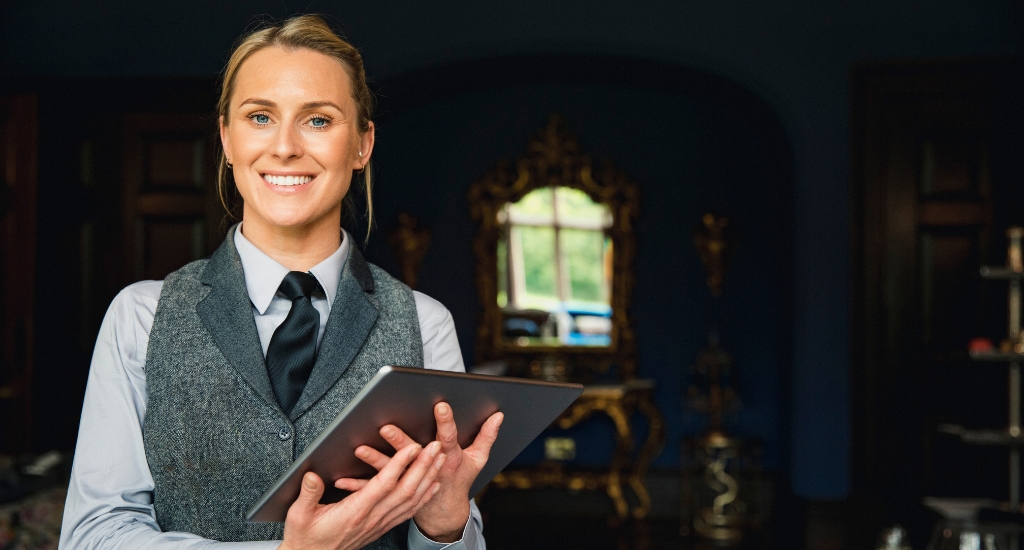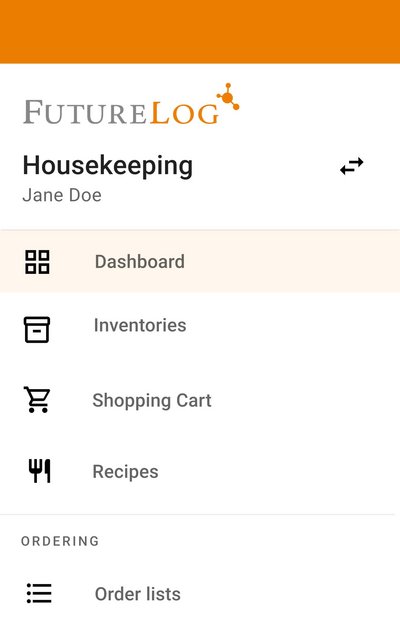
The Secret to Getting Executive Buy-in For Hospitality Procure-to-Pay Technology
Convincing the C-Suite
Digital procure-to-pay (P2P) solutions are a no-brainer for the modern hotelier, streamlining procurement cycles and generating insights for more strategic purchasing decisions. But these goals can’t be realised unless everyone is on board for the investment—particularly hospitality leadership and owners.

Despite the clear benefits of this technology, it can be difficult to convince leadership to take the plunge. Hotels operate on thin profit margins, with economic conditions like steep inflation giving the C-suite yet another reason to delay P2P investments. Many of these professionals have been in the business for a while and are attached to legacy systems that seem to do the job, at least for now. Executives may also have concerns about the security risks of new tools, especially cloud-based solutions, and don’t want to disrupt the flow of operations with a software upgrade.
Getting the green light
It’s helpful to remember that your hotel’s leadership is likely juggling numerous digital transformation requests, and it’s their job to focus only on those promising the greatest return on investment (ROI). Outlining the long-term value that P2P solutions can drive, not just within the procurement function but across the organisation, is key to making them an executive priority.
Recent industry research shows that keeping up with new technology is a primary focus for the C-suite in 2024. Forward-thinking executive teams want to innovate, understanding that digital transformation is vital for success—they just need to be presented with solid arguments to give the green light.

Procurement is more influential than ever
Procurement is more influential than ever when it comes to executive decision-making. Before delving into buy-in strategies, it’s worth mentioning how the role of procurement and procurement software has evolved in recent years. If you’re a Chief Procurement Officer (CPO), your relationship with hotel leadership likely doesn’t look the same now as it did even just a few years ago.
Since 2020, hoteliers have been under immense pressure to adapt to supply disruptions, evolving guest preferences, shifting sustainability demands, and digital transformation requirements. While handling these challenges involves several different strategies, their success is greatly influenced by how the hotel spends its money.

Digital solutions are delivering the greatest returns
Realising this, leadership teams are giving procurement a seat at the table in a new way, leveraging spend expertise to inform business agility and growth. According to Deloitte, CPOs are largely concerned with operational efficiency, ESG efforts, digital transformation, and margin improvement during these conversations. We also know from Deloitte research that few, if any, businesses are in a position to grow the procurement function, instead relying on CPOs to get creative and facilitate more value with their existing teams.
This is a big ask, but one that is very doable with the right P2P technologies. Almost nine out of ten procurement leaders say they lack enough talent to meet future goals, with purchasing departments aiming to reach 72% digitalisation by 2025 to fill in the gaps. Findings from PwC also indicate that compared to other spend processes like risk management, digital solutions are delivering the greatest returns when applied to end-to-end procurement cycles.
Agility and scalability
To keep up with the shift, P2P solutions are getting smarter and more efficient. P2P software, which is increasingly moving to the cloud, is allowing hotels to house end-to-end data and processes in one place for greater consistency and access. Users can share information with vendors and internal departments in real time to eliminate data silos and improve supplier relationships. Solutions powered with artificial intelligence (AI) automate routine tasks like PO creation and invoicing, alleviating personnel while shortening procurement cycles. What’s more, hotels can keep their procurement software agile and scalable, leaning on cost-effective cloud partners rather than legacy, on-premise systems.
By preventing fragmented data and offering a holistic view of hotel spend, modern P2P infrastructure is better at identifying risk, cost-saving opportunities, and high-value suppliers. These capabilities empower procurement to stay aligned with C-suite objectives—from reaching financial targets to achieving ESG goals.
Strategies for achieving buy-in:

1. Connect with a procurement champion
From your perspective, executives are like buyers—so think of your P2P plan as a sales pitch. You wouldn’t go to a potential customer immediately with a proposal, but instead, take the time to learn more about the customer’s needs and pain points. Similarly, it’s best to develop a rapport with someone on the executive team, if you haven’t already. Take the time to learn about their main goals, challenges, budgetary constraints, digital transformation objectives, and relationship to procurement.
It’s also helpful to understand why software projects proposed by teams in the past may have failed or were rejected. Their insights will likely be valuable for informing your P2P software strategy. For instance, getting some perspective on the hotel’s digital transformation roadmap will help narrow down which P2P solutions and software features align best with the organisation’s long-term goals. When it comes time to present your plan in more detail, it can make a huge difference to have an executive-level champion on your side.
2. Audit your existing procurement solutions and processes
Evaluating procurement performance is also essential to achieving buy-in. Which parts of the procurement function are performing well or could use improvement? Some examples of evaluation criteria include:
- Supplier performance. Consider factors like how suppliers communicate, whether they comply with your negotiated terms, the quality of goods or services provided, pricing, and how often goods are delivered on time and in full.
- Supplier relationship management (SRM). Evaluate the quality of your relationships with critical suppliers. Suppliers that are flexible and willing to work with you to ensure service continuity are often good indicators of your SRM strategy.
- Financial performance. Try to find cost-saving opportunities within the procurement function. Many procurement departments also measure success through spend under management, which indicates the proportion of the hotel’s total spend managed by procurement.
- Procurement cycle length. How long does it take from creating a purchase order request to finalising a contract or receiving goods? Set a target timeline and measure your performance against it.
- Value generation. How much value is the procurement function currently generating for the organisation? This aspect of performance looks different for every hotel. Consider things like whether loyal suppliers have enabled you to develop competitive guest services, or if procurement performance has helped improve margins.

You can also gather feedback from procurement personnel to understand gaps in their workflows. Since they’ll be the ones using the software day-to-day, it’s important to understand technology requirements from their perspective. How efficiently do they work? Are they lacking anything they need to do their jobs effectively? Do they run into recurrent challenges, like supplier contracts expiring without warning? Is it difficult for them to collaborate with cross-functional departments like finance?
3. Help leadership understand the benefits of modern P2P solutions
Not all executive members may understand how leading P2P solutions work and what sets them apart from manual processes and other legacy infrastructure. While it can be helpful to clarify technical information, you’re more likely to achieve buy-in if you communicate the benefits in a way that resonates with the executive mindset. Consider how different departments, including the C-suite, measure a return on investment (ROI) and build this into your proposal. For example, emphasise how P2P will realise ROI in terms of supplier performance and value, resilience during supply disruptions, ESG and sustainability, and key financial metrics like RevPar.

4. Create a detailed roadmap
Paint a clear picture of what procurement operations will look like with a new P2P solution in place. Where possible, forecast performance changes over time. For example, describe how spend under management, cost savings, ESG performance, procurement cycle length, or supplier relationships will look different in six months to a year or more after implementation. It’s also important to have a comprehensive plan for the logistics of getting a new P2P solution off the ground. Executives will want to know how long training and implementation will take and what IT resources are required. You can also consider how procurement operations will be maintained during rollout and how effectively the software integrates with other hotel systems.
5. Support leadership buy-in with FutureLog
Every hotel will be unique in its approach to digital transformation. On one hand, some executive and ownership teams may be reluctant to make software changes, either because it doesn’t seem necessary or they’re concerned with the financial risk. On the other hand, leadership may be technology-forward but simply caught up in which digital transformation efforts to prioritise first.
Achieving buy-in is always best approached by demonstrating the long-term returns of P2P software, both for the procurement function and the business as a whole. Proposing a solution designed specifically for the hospitality industry, like FutureLog, can also help win executives over with features that address specific industry requirements. When created by hoteliers for hoteliers, it’s an investment that is bound to resonate with the C-suite.

On board in the boardroom
Need to make a convincing business case for procurement digitisation and automation that will resonate with your C-suite? Contact FutureLog's team of hospitality experts today to discuss how our P2P solutions can help you achieve greater efficiency and cost savings.
OUR APP: Procure-to-pay while on the go!
From placing orders and managing recipes to approving invoices and viewing reports, with FutureLog’s native mobile app you’ll have all the power and automation of our P2P web solutions conveniently at your fingertips. Whether you’re online or offline, you can stay in control.



